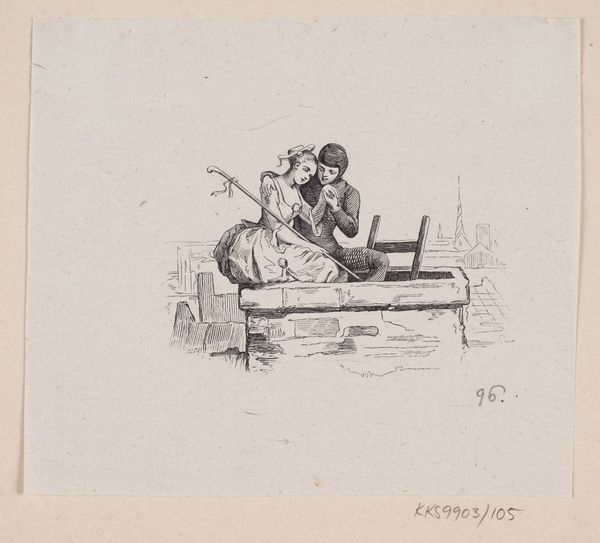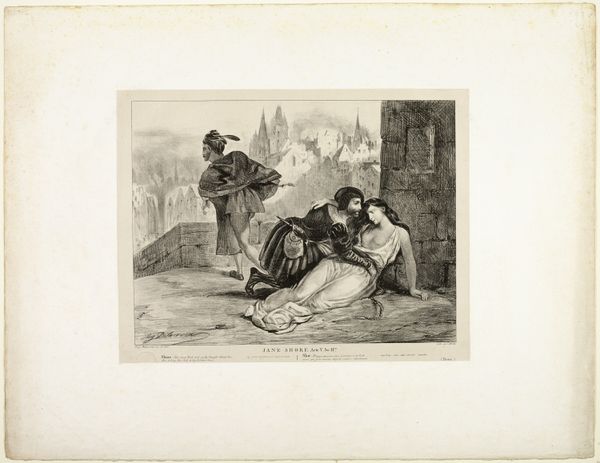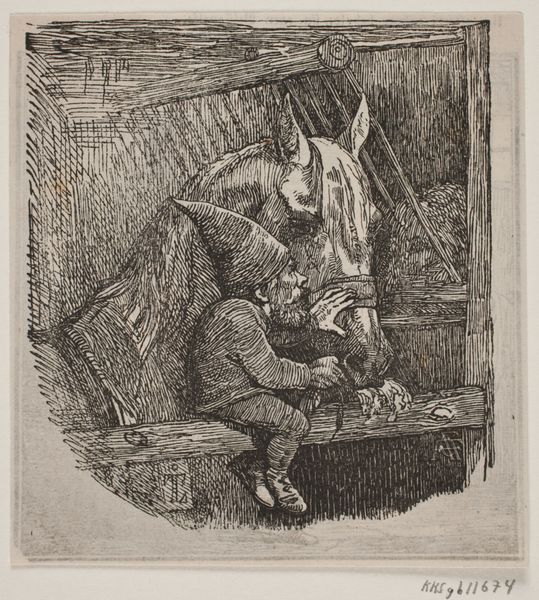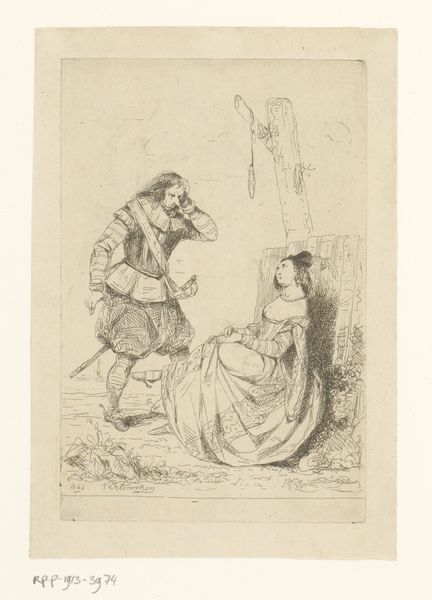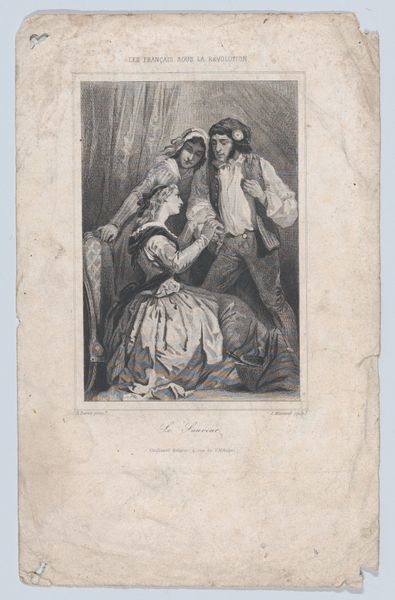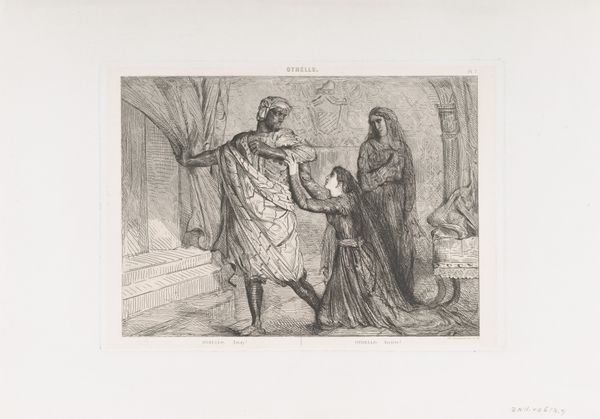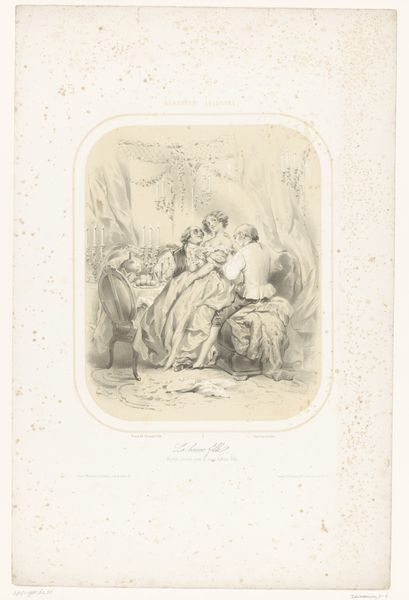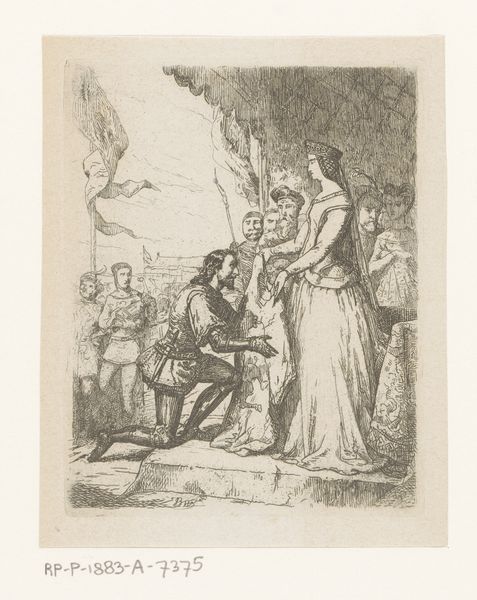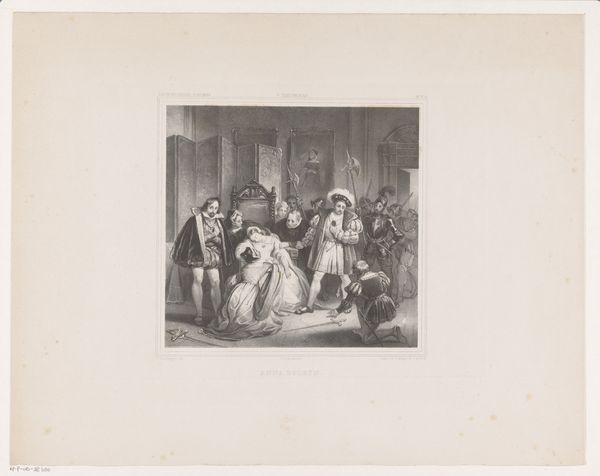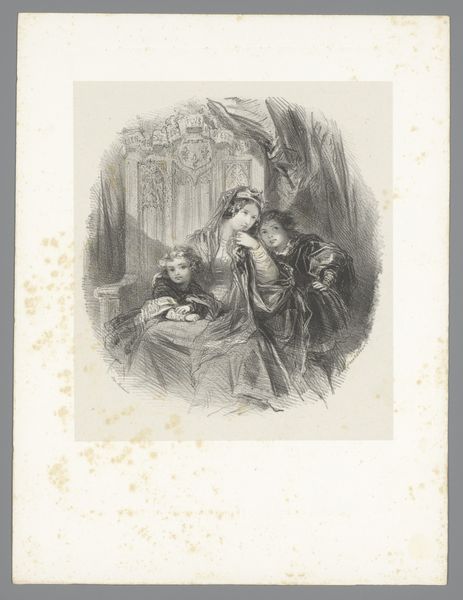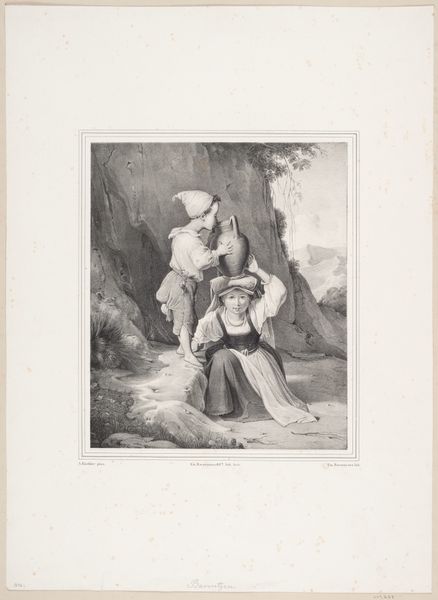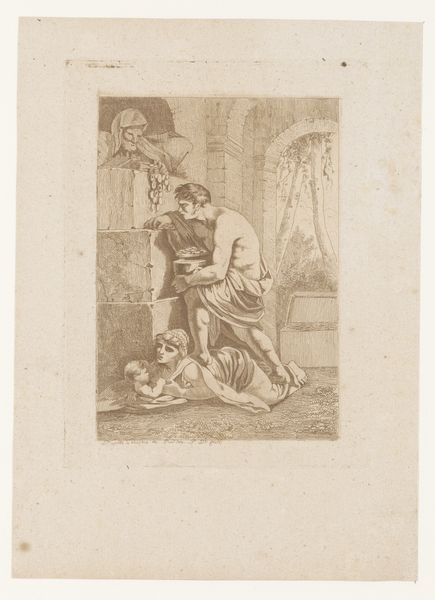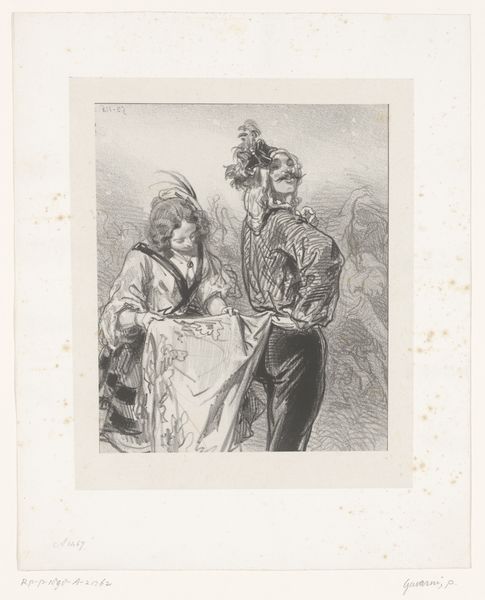
Illustration til "Klods-Hans" i H.C. Andersen, "Eventyr og Historier", Bind 2 1870 - 1873
0:00
0:00
drawing, print, pen
#
drawing
#
narrative-art
# print
#
pen
#
genre-painting
#
history-painting
Dimensions: 79 mm (height) x 87 mm (width) (bladmaal)
H.P. Hansen made this illustration for Hans Christian Andersen's "Clumsy Hans" story using engraving, a printmaking process where lines are incised into a metal plate. Look closely, and you'll notice the entire image is built from precisely cut lines. The density and direction of these lines create shading and texture, defining the forms of the king, queen, and their royal attire. Engraving demands meticulous skill and patience, a far cry from the impulsive gesture of drawing or painting. Each mark is deliberate, requiring careful planning and execution. The choice of engraving is significant. During Hansen's time, it was a primary method for mass-producing images, perfectly suited for illustrating widely circulated stories like Andersen's fairy tales. This brings up interesting questions about labor and the role of craft within a burgeoning culture of mass media. The engraver, often unacknowledged, played a crucial role in disseminating art and literature to a broader audience. So, when we look at this tiny illustration, let’s not just see a charming fairy tale scene, but also consider the labor, skill, and technology that brought it to life.
Comments
No comments
Be the first to comment and join the conversation on the ultimate creative platform.
